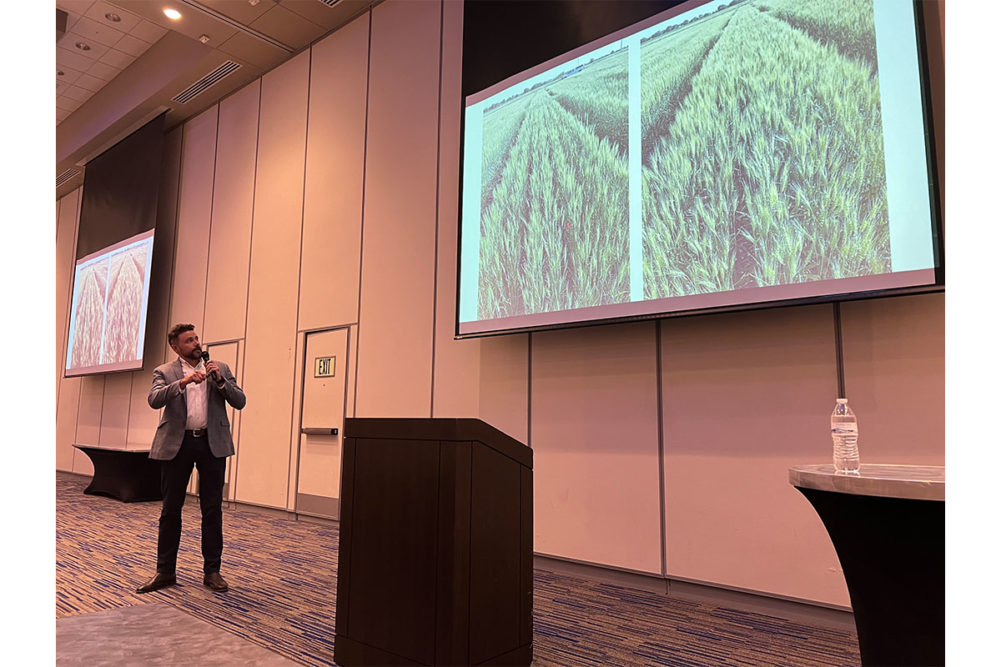OLATHE, KAN. — A series of speakers updated millers, bakers and others in the wheat value chain on the state of the industry at the Wheat Quality Council’s annual meeting last month.
Jane DeMarchi, president of the North American Millers’ Association, reminded attendees of the recent trajectory of US wheat flour production, noting the high volumes in 2022 and a downhill slide in 2023, particularly in the fourth quarter.
“This speaks to why it’s important that we continue to focus on our promotional efforts,” DeMarchi said. “We’re fortunate in the US our population continues to grow and generally newcomers to the US eat wheat. Per capita consumption is decreasing but because of the population going up, our overall production numbers are still sustainable.”
DeMarchi listed food safety topics currently on NAMA’s watchlist. Included were flour food safety issues such as micro e.Coli Salmonella that can be found in raw flour; chemical hazards in foods such as mycotoxins; new guidance on lead levels and a team was working on cadmium guidance; and a recent trend of college students unwisely consuming partially baked pizza dough. Additionally, NAMA is working with the US Department of Agriculture using data compiled by Great Plains Analytical Laboratory to study aflatoxin levels in wheat, she said, with study results a few years out.
“Food safety is a No. 1 priority for NAMA,” she said. “Food safety demands by consumers and our customers continue to grow every day, and milling companies are very focused on how they can meet those expectations.”
Lucas Haag, a Kansas State University associate professor, extension agronomist at K-State Research & Extension and a wheat producer, gave an overview of what the state’s extension service does and how that fits into the broader wheat chain.
“There are some things (Extension) has to be reactive to,” he said. “Something pops up, people expect us to have some sort of management. Depending on what that is, it can take a little or a lot of time. That must come first, because that’s what our clientele is expecting of us. At the same time, certainly our role as scientists and as public servants, we want to be proactive. Hopefully we have the foresight in picking up things among our colleagues and from our industry partners and taking those questions we’re getting from producers and turning it into some sort of proactive effort to be ahead of whatever’s the next curve.”
Haag spoke about Extension’s advantage of being able to look at a problem long term and its role in management of diseases such as wheat streak mosaic.
“When we’re coming off one of those years like 2017, when wheat streak mosaic absolutely hammers the Kansas crop,” he said. “We look at it as an educational opportunity. How can we, while this topic is hot, how can we capitalize on that to do some education and maybe move the needle on management. We try to line those things up.”
Other speakers included: Romulo Lollato, a Kansas State University associate professor and Extension agronomist, on the difference in yield and quality resulting from contrasting management practices; Brian Walker of BW Consulting provided an update on the National Wheat Yield Contest; and James Scher, director of sales-specialty solutions-milling at ADM, spoke about the present and future of regenerative agriculture. Chris Kirby, executive director of the Home Baking Association, and Rasma Zvaners, vice president of government relations at the American Bakers Association, presented updates by video on their respective organizations.
The annual meeting was presented by Wheat Quality Council executive vice president Dave Green, his team and the speaker session moderated by Jim Peterson of the North Dakota Wheat Commission. The next WQC event will be the Hard Winter Wheat Tour to commence May 13 in Manhattan, Kan.




